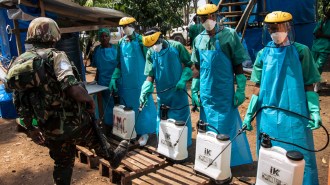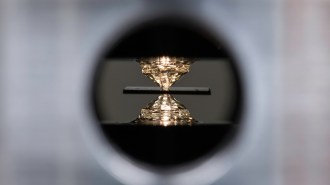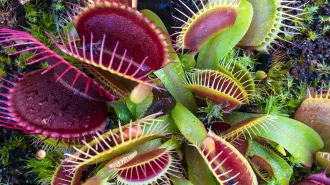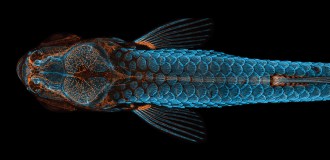All Stories
-
 Health & Medicine
Health & MedicineRemdesivir doesn’t reduce COVID-19 deaths, a large WHO trial finds
An international study of more than 11,000 people finds that remdesivir doesn’t prevent deaths from COVID-19, but the drug may still be useful.
-
 Health & Medicine
Health & MedicineCan supplements really help fight COVID-19? Here’s what we know and don’t know
Unless you’re deficient, there’s little evidence yet for taking Vitamin D and other supplements to treat or prevent a coronavirus infection.
By Laura Beil -
 Astronomy
AstronomyTurning space images into music makes astronomy more accessible
Music created from telescope data helps people with blindness and visual impairments experience the wonders of astronomy, and could aid research.
-
 Health & Medicine
Health & MedicineThe FDA has approved the first treatment for Ebola
Lab-made antibodies developed by Regeneron marshal an immune response and curb the Ebola virus’s ability to infect cells.
-
 Space
SpaceA spherical star cluster has surprisingly few heavy elements
A globular cluster in the nearby Andromeda galaxy challenges conventional wisdom about how galaxies form.
-
 Math
MathA documentary and a Bollywood film highlight two disparate paths in mathematics
An unlikely pair of films recount tales of two very different mathematical women, Maryam Mirzakhani and Shakuntala Devi.
-
 Environment
EnvironmentHow planting 70 million eelgrass seeds led to an ecosystem’s rapid recovery
The study is a blueprint for restoration efforts that capitalize on seagrass habitats’ capacity to store carbon and that can be replicated elsewhere.
-
 Physics
PhysicsThe first room-temperature superconductor has finally been found
A compound of carbon, hydrogen and sulfur conducts electricity without resistance up to 15° C, but there’s a catch: It works only under high pressure.
-
 Plants
PlantsHow Venus flytraps store short-term ‘memories’ of prey
Glowing Venus flytraps reveal how calcium buildup in the cells of leaves acts as a short-term “memory” that helps the plants identify prey.
-
 Animals
AnimalsGlowing blue helps shield this tardigrade from harmful ultraviolet light
Tardigrades have a newly discovered trick up their sleeve: fluorescence.
-
 Life
LifeA glowing zebrafish wins the 2020 Nikon Small World photography contest
The annual competition features snapshots that use microscopy to reveal some of Earth’s smallest hidden marvels.
-
 Animals
AnimalsPufferfish may be carving mysterious ‘crop circles’ near Australia
In 2011, scientists discovered that tiny pufferfish were sculpting Japan’s underwater “mystery circles.” Now, more circles have emerged in Australia.
By Jake Buehler